Opinion & Analysis
Wishon: “What shaft flex should I use?”
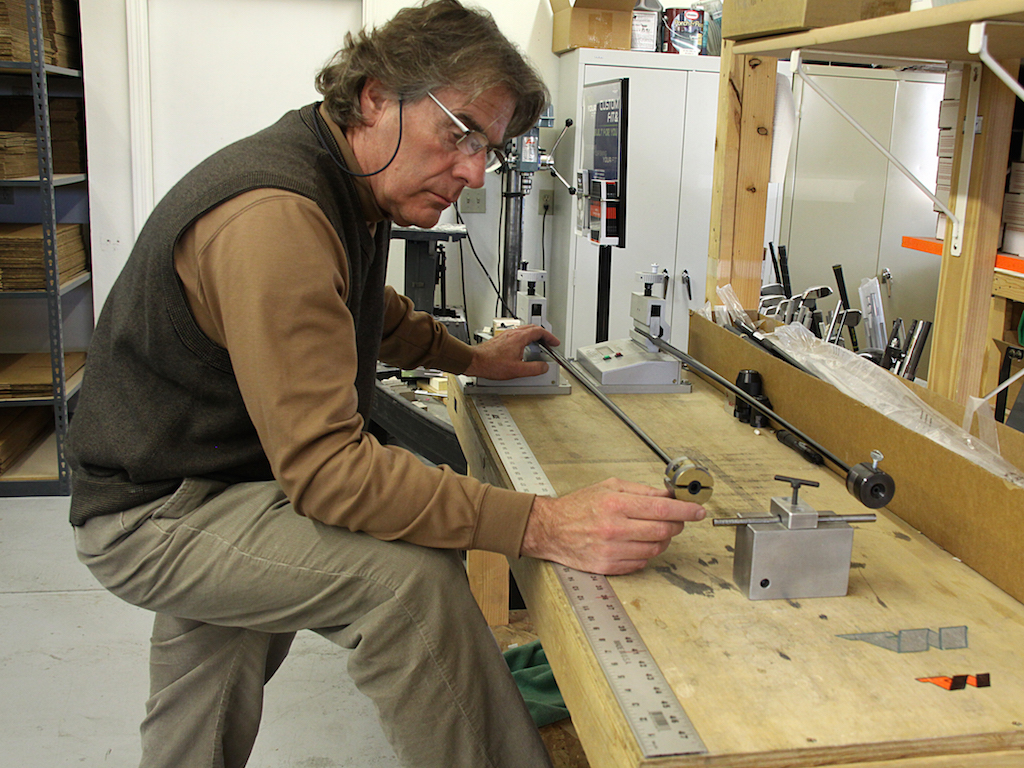
Let’s start our discussion by making one thing clear. There’s a lot to fitting the flex and bend profile of shafts — enough to write a whole book.
In asking me to write about the fitting of each of the key specs of golf clubs, GolfWRX in essence gives me a “1-pound bag” each week to offer information about each fitting spec. Covering everything about shaft flex and bend profile would be like trying to put 100 pounds of stuff into that 1-pound bag!
For those who are really into knowing as much as possible about flex and bend profile fitting in shafts, I recommend you read the three-part series I wrote for GolfWRX some time ago.
Related
- Part 1 — Taking the guesswork out of selecting shafts
- Part 2 — Taking shaft fitting from guessing to specifics
- Part 3 — Facts about shafts: What they do
For those who may not be that familiar with fitting for FLEX and for BEND PROFILE, fitting for the flex is a matter of finding a shaft with the correct swing speed rating for the golfer’s clubhead speed AND transition/tempo, while fitting the bend profile involves matching the tip stiffness design of the shaft to the golfer’s point of release.
Of all the points that an experienced club fitter has to evaluate to do a good job in the fitting of flex and bend profile, the most important one is to have accurate shaft bend profile measurement and swing speed rating data on the largest possible population of shaft models and flexes. This is because there are no standards for the flex of a shaft in the golf industry. Each golf company and shaft company is free to decide how stiff any of their letter flex codes on their shafts are to be. As such, the R flex from one company can be of the same stiffness as the S flex from another company or the A flex from a third.
Without access to a large data base of actual stiffness and swing speed rating measurements for shafts to be able to clearly know and compare the stiffness design of shafts, fitting for flex and bend profile is a matter of time consuming and frustrating trial and error. Period.
The following bend profile data graph is simply offered as an example of the type of shaft stiffness measurement data required to take shaft flex/bend profile fitting from a trial-and-error process to one of clear, succinct organization. This example graph will also prove the point about the confusion in flex due to a lack of standards in the industry.
Each of the five shafts in this graph are labeled and sold as S-flex shafts. The stiffness measurements represent a range of three full flexes, or stated another way, represent a swing speed rating difference of more than 30 mph.
With such data, the flex and bend profile fitting analysis follows these procedures:
1. Accurately measure the average clubhead speed of the golfer with a driver and a 5- or 6-iron.
2. Observe the golfer’s downswing transition and tempo and evaluate it as either:
A) Smooth/gradual/passive with little sense of acceleration.
B) Average, with some sense of force and acceleration from the transition through the downswing.
C) Forceful and aggressive, as if the golfer cannot wait to pour on the coals to accelerate the club to impact.
In simple terms, the club fitter is observing whether the golfer is more of a swinger (A), a definite hitter (C) or somewhere in between (B) with his downswing transition and tempo.
3. Observe the golfer’s point of release (i.e. the point at which the golfer begins to unhinge the wrist-cock angle on the downswing as either (1) early, (2) midway, (3) later, or (4) very late. Another way to evaluate this is to reference the point of starting the release to the hour numbers on a clock while facing the golfer.
- (1) Early: 11 to 9:30
- (2) Midway: 9:30 to 8:30
- (3 Later: 8:30 to 7:30
- (4) Very Late: 7:30 to 6:30
4. Choose shafts of the correct weight (see my story on shaft weight/total weight), which have a swing speed rating that matches to the golfer’s clubhead speed and an adjustment for their transition and tempo evaluation with a tip stiffness design that matches the golfer’s point of release.
We will use an example of a golfer with a 100 mph driver clubhead speed. The up or down adjustment in the swing speed rating and tip stiffness recommendation is the same for all other clubhead speeds.
The above procedures are done to give the club fitter A STARTING POINT for shaft flex and bend profile fitting. Suitable candidate shafts are chosen by the club fitter from which the test club hitting process begins.
Again, because the best club fitters are superb multi-taskers during the test club sessions for flex and bend profile, the club fitter is also testing for shaft weight, swing weight and continually asking the golfer for feedback with each change of head weight or shaft.
Without question, the matter of ADVANCED PLAYER SHAFT FLEX/BEND PROFILE FITTING must also include an evaluation of the golfer’s preference for feel elements and shot shape/performance related to the flex/bend profile. Experienced club fitters will ask the golfer to provide the names of shafts the golfer has used, along with the golfer’s feedback of too high, too low, good flight, too stiff feeling, too flexible feeling, just right feeling, etc.
With this information, the club fitter will access his database of shaft stiffness measurements to study as many of the golfer’s previous shafts and compare the stiffness measurements. Through this process, the club fitter will be able to know what the actual stiffness measurements are for each shaft model feedback opinion from the golfer. From this the club fitter will have a very clear picture of what the stiffness measurements need to be to best satisfy the golfer’s feel and shot shape preferences.
Again, with the right database of shaft stiffness measurements, the process of flex and bend profile fitting becomes a very organized, very orderly, and very accurate process. Without such information, shaft flex and bend profile fitting will forever be a matter of trial and error.
Related
- What length should your clubs be?
- What lofts should your clubs be?
- Face angle is crucial for a proper fitting
- The best way to fit lie angle
- How to choose the right club head design
- Tom Wishon’s keys to set makeup
- Getting the right size grip, time after time
- What shaft weight should you play?
- What swing weight should your clubs be?
- What shaft flex should I use?
This story is part of a 10-part series from Tom Wishon on professional club fitting.
Opinion & Analysis
The 2 primary challenges golf equipment companies face

As the editor-in-chief of this website and an observer of the GolfWRX forums and other online golf equipment discourse for over a decade, I’m pretty well attuned to the grunts and grumbles of a significant portion of the golf equipment purchasing spectrum. And before you accuse me of lording above all in some digital ivory tower, I’d like to offer that I worked at golf courses (public and private) for years prior to picking up my pen, so I’m well-versed in the non-degenerate golf equipment consumers out there. I touched (green)grass (retail)!
Complaints about the ills of and related to the OEMs usually follow some version of: Product cycles are too short for real innovation, tour equipment isn’t the same as retail (which is largely not true, by the way), too much is invested in marketing and not enough in R&D, top staffer X hasn’t even put the new driver in play, so it’s obviously not superior to the previous generation, prices are too high, and on and on.
Without digging into the merits of any of these claims, which I believe are mostly red herrings, I’d like to bring into view of our rangefinder what I believe to be the two primary difficulties golf equipment companies face.
One: As Terry Koehler, back when he was the CEO of Ben Hogan, told me at the time of the Ft Worth irons launch, if you can’t regularly hit the golf ball in a coin-sized area in the middle of the face, there’s not a ton that iron technology can do for you. Now, this is less true now with respect to irons than when he said it, and is less and less true by degrees as the clubs get larger (utilities, fairways, hybrids, drivers), but there remains a great deal of golf equipment truth in that statement. Think about it — which is to say, in TL;DR fashion, get lessons from a qualified instructor who will teach you about the fundamentals of repeatable impact and how the golf swing works, not just offer band-aid fixes. If you can’t repeatably deliver the golf club to the golf ball in something resembling the manner it was designed for, how can you expect to be getting the most out of the club — put another way, the maximum value from your investment?
Similarly, game improvement equipment can only improve your game if you game it. In other words, get fit for the clubs you ought to be playing rather than filling the bag with the ones you wish you could hit or used to be able to hit. Of course, don’t do this if you don’t care about performance and just want to hit a forged blade while playing off an 18 handicap. That’s absolutely fine. There were plenty of members in clubs back in the day playing Hogan Apex or Mizuno MP-32 irons who had no business doing so from a ballstriking standpoint, but they enjoyed their look, feel, and complementary qualities to their Gatsby hats and cashmere sweaters. Do what brings you a measure of joy in this maddening game.
Now, the second issue. This is not a plea for non-conforming equipment; rather, it is a statement of fact. USGA/R&A limits on every facet of golf equipment are detrimental to golf equipment manufacturers. Sure, you know this, but do you think about it as it applies to almost every element of equipment? A 500cc driver would be inherently more forgiving than a 460cc, as one with a COR measurement in excess of 0.83. 50-inch shafts. Box grooves. And on and on.
Would fewer regulations be objectively bad for the game? Would this erode its soul? Fortunately, that’s beside the point of this exercise, which is merely to point out the facts. The fact, in this case, is that equipment restrictions and regulations are the slaughterbench of an abundance of innovation in the golf equipment space. Is this for the best? Well, now I’ve asked the question twice and might as well give a partial response, I guess my answer to that would be, “It depends on what type of golf you’re playing and who you’re playing it with.”
For my part, I don’t mind embarrassing myself with vintage blades and persimmons chasing after the quasi-spiritual elevation of a well-struck shot, but that’s just me. Plenty of folks don’t give a damn if their grooves are conforming. Plenty of folks think the folks in Liberty Corner ought to add a prison to the museum for such offences. And those are just a few of the considerations for the amateur game — which doesn’t get inside the gallery ropes of the pro game…
Different strokes in the game of golf, in my humble opinion.
Anyway, I believe equipment company engineers are genuinely trying to build better equipment year over year. The marketing departments are trying to find ways to make this equipment appeal to the broadest segment of the golf market possible. All of this against (1) the backdrop of — at least for now — firm product cycles. And golfers who, with their ~15 average handicap (men), for the most part, are not striping the golf ball like Tiger in his prime and seem to have less and less time year over year to practice and improve. (2) Regulations that massively restrict what they’re able to do…
That’s the landscape as I see it and the real headwinds for golf equipment companies. No doubt, there’s more I haven’t considered, but I think the previous is a better — and better faith — point of departure when formulating any serious commentary on the golf equipment world than some of the more cynical and conspiratorial takes I hear.
Agree? Disagree? Think I’m worthy of an Adam Hadwin-esque security guard tackle? Let me know in the comments.
@golfoncbs The infamous Adam Hadwin tackle ? #golf #fyp #canada #pgatour #adamhadwin ? Ghibli-style nostalgic waltz – MaSssuguMusic
Podcasts
Fore Love of Golf: Introducing a new club concept

Episode #16 brings us Cliff McKinney. Cliff is the founder of Old Charlie Golf Club, a new club, and concept, to be built in the Florida panhandle. The model is quite interesting and aims to make great, private golf more affordable. We hope you enjoy the show!
Opinion & Analysis
On Scottie Scheffler wondering ‘What’s the point of winning?’

Last week, I came across a reel from BBC Sport on Instagram featuring Scottie Scheffler speaking to the media ahead of The Open at Royal Portrush. In it, he shared that he often wonders what the point is of wanting to win tournaments so badly — especially when he knows, deep down, that it doesn’t lead to a truly fulfilling life.
View this post on Instagram
“Is it great to be able to win tournaments and to accomplish the things I have in the game of golf? Yeah, it brings tears to my eyes just to think about it because I’ve literally worked my entire life to be good at this sport,” Scheffler said. “To have that kind of sense of accomplishment, I think, is a pretty cool feeling. To get to live out your dreams is very special, but at the end of the day, I’m not out here to inspire the next generation of golfers. I’m not out here to inspire someone to be the best player in the world, because what’s the point?”
Ironically — or perhaps perfectly — he went on to win the claret jug.
That question — what’s the point of winning? — cuts straight to the heart of the human journey.
As someone who’s spent over two decades in the trenches of professional golf, and in deep study of the mental, emotional, and spiritual dimensions of the game, I see Scottie’s inner conflict as a sign of soul evolution in motion.
I came to golf late. I wasn’t a junior standout or college All-American. At 27, I left a steady corporate job to see if I could be on the PGA Tour starting as a 14-handicap, average-length hitter. Over the years, my journey has been defined less by trophies and more by the relentless effort to navigate the deeply inequitable and gated system of professional golf — an effort that ultimately turned inward and helped me evolve as both a golfer and a person.
One perspective that helped me make sense of this inner dissonance around competition and our culture’s tendency to overvalue winning is the idea of soul evolution.
The University of Virginia’s Division of Perceptual Studies has done extensive research on reincarnation, and Netflix’s Surviving Death (Episode 6) explores the topic, too. Whether you take it literally or metaphorically, the idea that we’re on a long arc of growth — from beginner to sage elder — offers a profound perspective.
If you accept the premise literally, then terms like “young soul” and “old soul” start to hold meaning. However, even if we set the word “soul” aside, it’s easy to see that different levels of life experience produce different worldviews.
Newer souls — or people in earlier stages of their development — may be curious and kind but still lack discernment or depth. There is a naivety, and they don’t yet question as deeply, tending to see things in black and white, partly because certainty feels safer than confronting the unknown.
As we gain more experience, we begin to experiment. We test limits. We chase extreme external goals — sometimes at the expense of health, relationships, or inner peace — still operating from hunger, ambition, and the fragility of the ego.
It’s a necessary stage, but often a turbulent and unfulfilling one.
David Duval fell off the map after reaching World No. 1. Bubba Watson had his own “Is this it?” moment with his caddie, Ted Scott, after winning the Masters.
In Aaron Rodgers: Enigma, reflecting on his 2011 Super Bowl win, Rodgers said:
“Now I’ve accomplished the only thing that I really, really wanted to do in my life. Now what? I was like, ‘Did I aim at the wrong thing? Did I spend too much time thinking about stuff that ultimately doesn’t give you true happiness?’”
Jim Carrey once said, “I think everybody should get rich and famous and do everything they ever dreamed of so they can see that it’s not the answer.”
Eventually, though, something shifts.
We begin to see in shades of gray. Winning, dominating, accumulating—these pursuits lose their shine. The rewards feel more fleeting. Living in a constant state of fight-or-flight makes us feel alive, yes, but not happy and joyful.
Compassion begins to replace ambition. Love, presence, and gratitude become more fulfilling than status, profits, or trophies. We crave balance over burnout. Collaboration over competition. Meaning over metrics.
Interestingly, if we zoom out, we can apply this same model to nations and cultures. Countries, like people, have a collective “soul stage” made up of the individuals within them.
Take the United States, for example. I’d place it as a mid-level soul: highly competitive and deeply driven, but still learning emotional maturity. Still uncomfortable with nuance. Still believing that more is always better. Despite its global wins, the U.S. currently ranks just 23rd in happiness (as of 2025). You might liken it to a gifted teenager—bold, eager, and ambitious, but angsty and still figuring out how to live well and in balance. As much as a parent wants to protect their child, sometimes the child has to make their own mistakes to truly grow.
So when Scottie Scheffler wonders what the point of winning is, I don’t see someone losing strength.
I see someone evolving.
He’s beginning to look beyond the leaderboard. Beyond metrics of success that carry a lower vibration. And yet, in a poetic twist, Scheffler did go on to win The Open. But that only reinforces the point: even at the pinnacle, the question remains. And if more of us in the golf and sports world — and in U.S. culture at large — started asking similar questions, we might discover that the more meaningful trophy isn’t about accumulating or beating others at all costs.
It’s about awakening and evolving to something more than winning could ever promise.








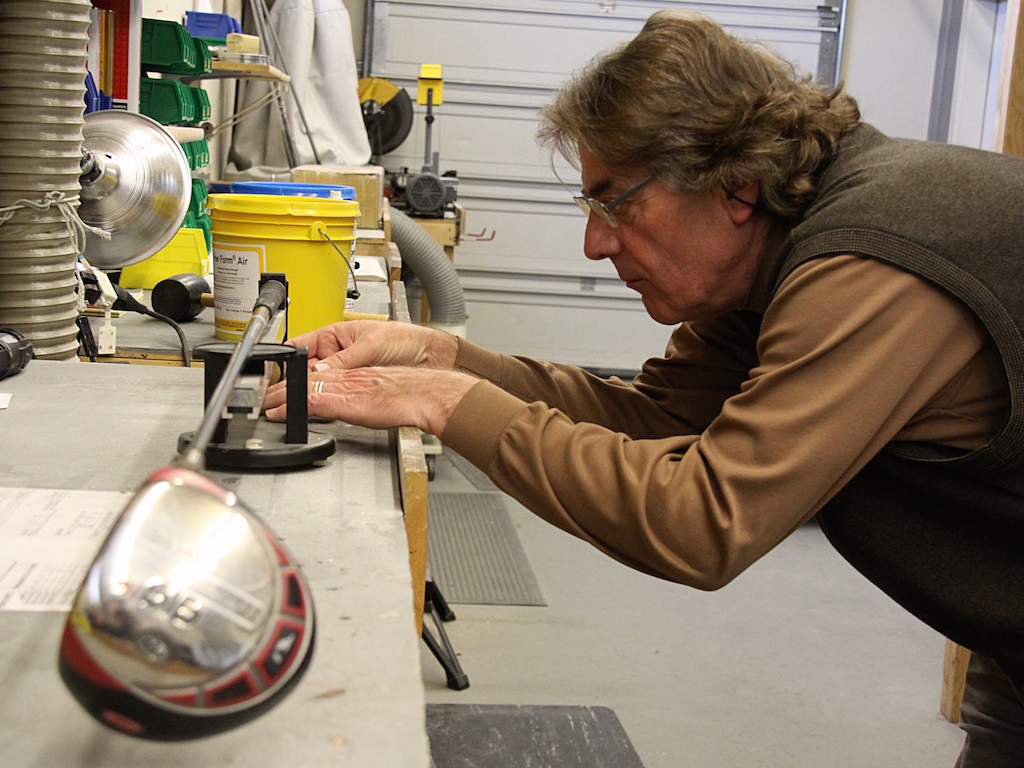
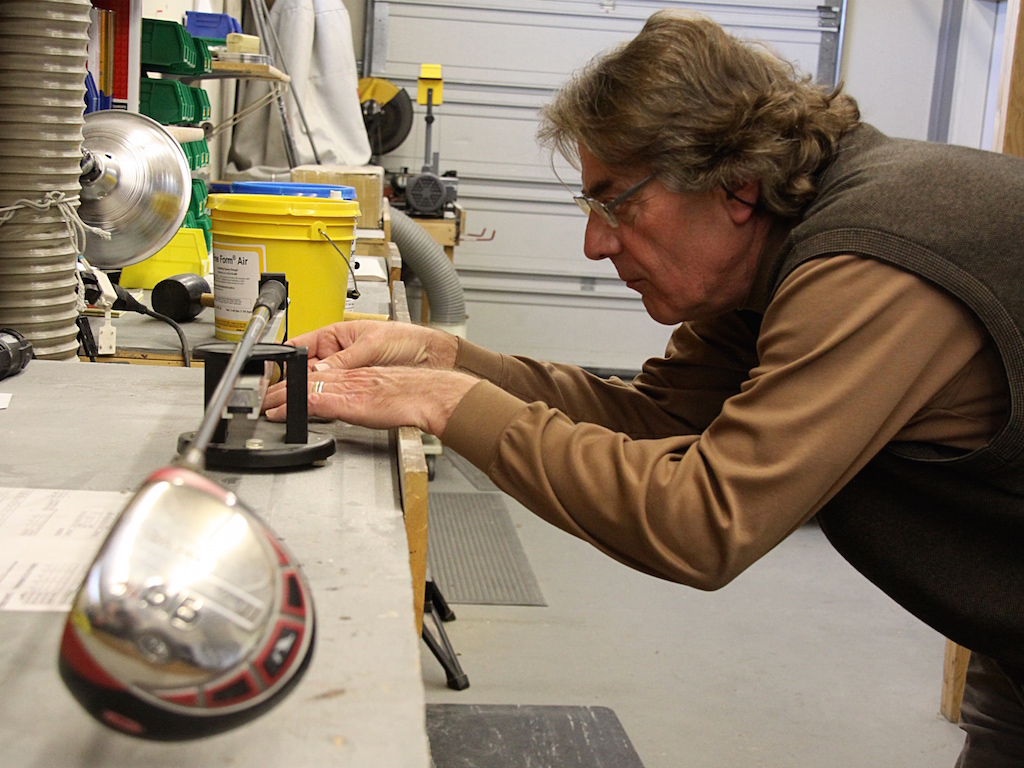
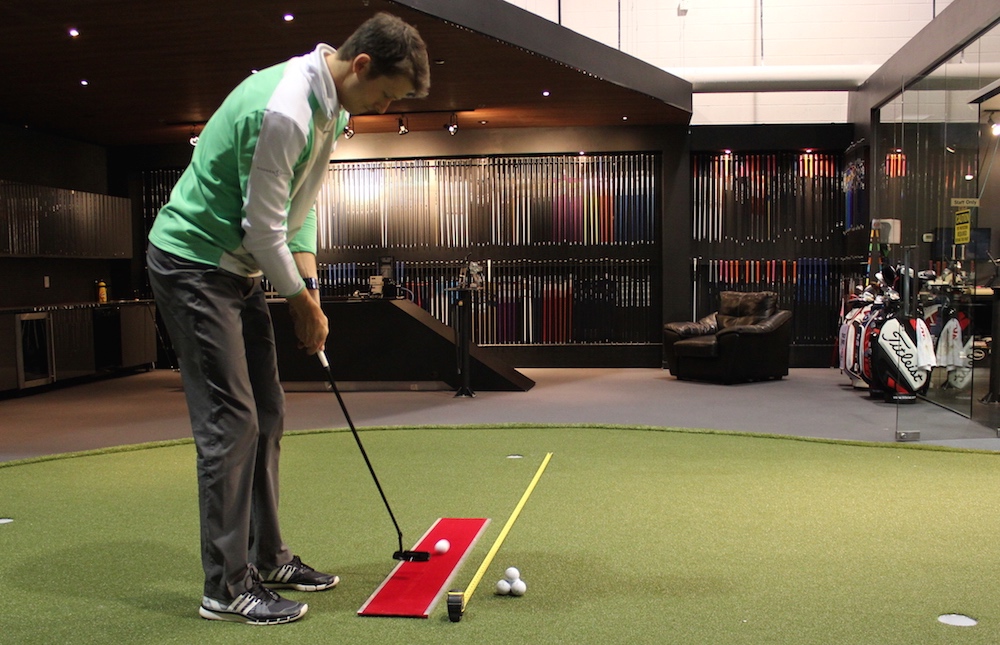
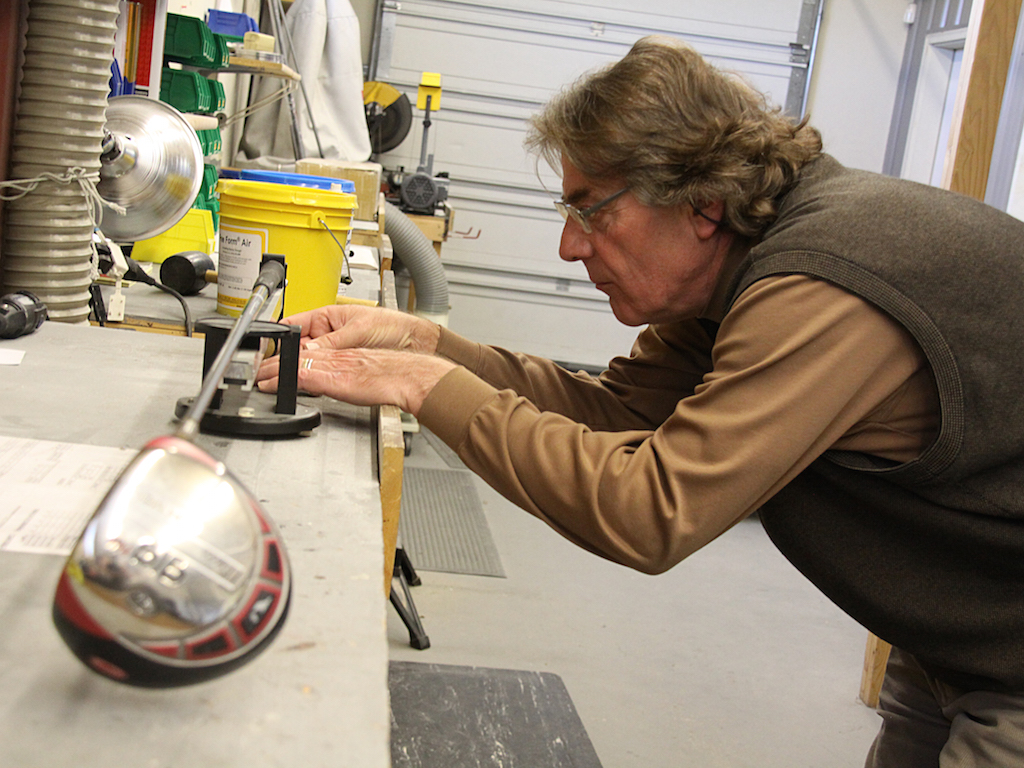
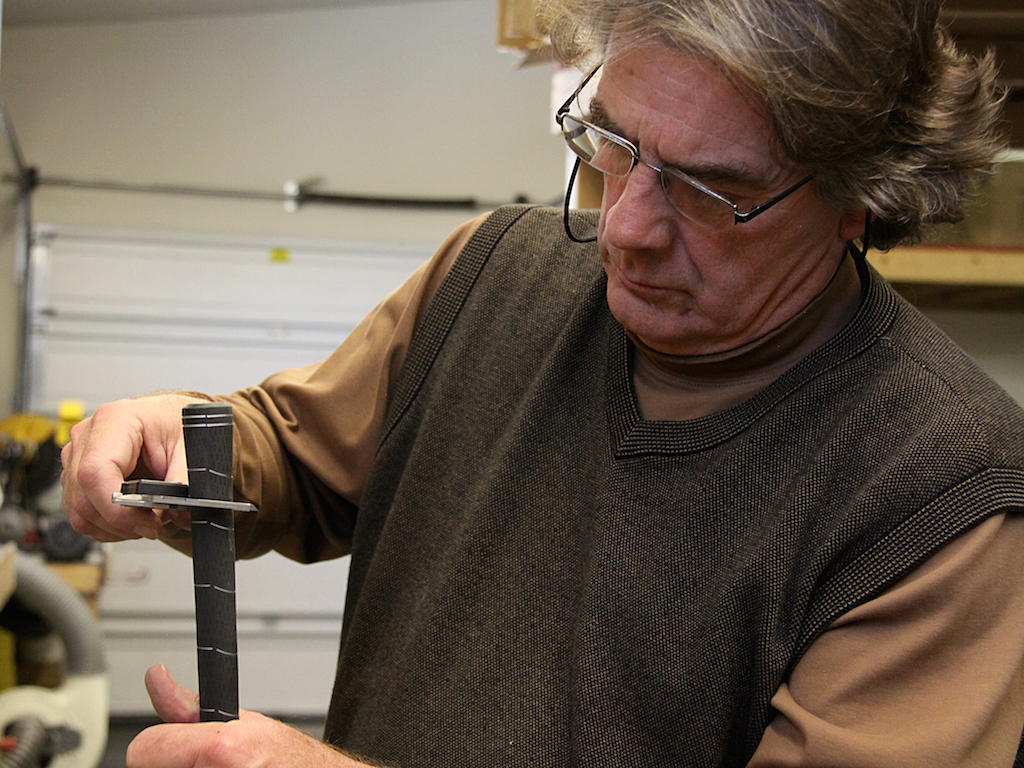








today tv schedule
Oct 7, 2023 at 5:53 pm
I would recommend using a stiffer shaft flex for a higher launch.
Jim M.
Mar 24, 2015 at 10:56 am
Hello Tom,
I’m curious if you have any thoughts or opinions on the accuracy/validity of the Golfworks “MPF Shaft Ratings”? Up to this point it’s the only shaft rating guide that I’ve used, and have found it to be better than going about shaft purchases blind, but not something I’d use and bet the house on.
Since I’m just up in Boulder, maybe we can discuss the fascinating World of Shafts in person someday. Thanks for your articles, really enjoy hearing your perspective!
Tom Wishon
Mar 24, 2015 at 4:53 pm
Jim M
Sorry, but I don’t think very much of the Golfworks MPF shaft ratings. If you take a look at the clubhead speed ranges that they advise, you will see that every R flex is rated for the same 77-92mph driver speed, every S for the same 93-107 swing speed and so on. In doing this they are showing they are not aware of the fact that there is no standard for letter flex as I showed in that bend profile graph in the article. Also, having a 14-15mph swing speed range within the same flex is too large. While there are some areas for which I hold high regard for Golfworks, this is not one of them and the information is not very good for helping golfers find the best shaft for their swing characteristics. That graph you see in the article comes from my Bend Profile software program in which we now have something like 3,000 different shafts in the data base. Many of the clubmakers use this as their guide for empirically comparing the full length stiffness design of shafts so they know much more precisely how one shaft compares to the other. We certainly do not have all the shafts in the data base because this is a monumental task to try to get samples of as many shafts as we can. We certainly cannot buy them all. So we ask the shaft makers to submit samples of their shafts for us to measure and put into the data base. And as happens, some of the shaft makers choose not to participate for whatever reasons. But as it stands now, this software program is the most extensive data base of shaft relative stiffness measurements for clubmakers or golfers to have to be able to make better empirical comparisons.
Jim M.
Mar 25, 2015 at 11:39 am
Thanks for the reply Tom. I was under the impression Golfworks had a bit more sophisticated analysis at play, but as you point out, my impression was false.
I’ve had a couple “clunker” purchases recently, and things are making a lot more sense why now!
Devon
Mar 18, 2015 at 10:54 pm
Hi Tom:
Thanks again so much for posting. Incredibly valuable knowledge. It seems from reading your posts, I have been misunderstanding the role of shaft flex (and it seems I would not be alone!). I have always thought the main consideration in choosing a shaft is the trade-off between distance and accuracy. Want more distance, get a flexible shaft that will bend more and load the club head more like a sling shot catapult. Want more accuracy, get a stiffer shaft that won’t bend and twist as much, and thus provide a more consistently square face at impact. If you have a fast club head speed like I do (115+ for driver), but a miss will put you three fairways over, get the stiffest shaft you can find. When I read your posts, however, I don’t see any mention of stiffness impacting accuracy (hitting it straight). I see mention of stiffness affecting two main areas: 1) trajectory, spin rate, and launch angle (for harder swinging, late releasing folks, which I think I would also be); and 2) an individual preference for the feel of the club either loading or not loading.
Have I been wrong all these years in thinking the main consideration in choosing stiffness is the trade-off of distance and accuracy?
Tom Wishon
Mar 20, 2015 at 3:47 pm
Devon:
Thanks for asking your question so I could have the chance to answer because this is a very good question since it has been said over the years that stiffer means more accurate and flexible means more distance. This concept has its roots from way back, long before serious research was done to find out precisely what the stiffness design of a shaft really does for golfers with different swing characteristics.
It fooled Karsten because those who remember Ping clubs from the 70s and 80s recall that he always used one very stiff flex in all the clubs Ping made back then, from this belief that going very stiff was better because it offered better accuracy. But once he and his engineers discovered the real performance contribution of flex and bend profile, Ping did move away from this original very stiff philosophy to make their clubs with different flexes to better match to the clubhead speeds of golfers.
Where this stiffer is more accurate and flexible is more distance belief came about was from way back when really good players would use different flex shafts – not from regular golfer testing with different stiffnesses. When a high clubhead speed player with a later release uses a MUCH more flexible shaft, the forward bending of the shaft coming into impact not only increases the dynamic loft to result in a higher launch/more spin/higher flight, but a greater amount of forward bending also causes the face to close a little bit too. So these higher speed, late release players would see that they had a tendency to draw or even hook the ball a little more when using a much more flexible shaft. Changing to a stiffer shaft reduced the amount of forward bend on the shaft at impact, which in turn lowered launch/spin/trajectory AND reduced the tendency of the forward bend to close the face. So from this came the belief that stiffer was more accurate.
Not so with avg to regular players because without a higher speed AND later release, the shaft cannot come to impact in a forward bend position to bring about any real change in launch/spin/trajectory or any change in the face angle position.
The concept that more flexible meant more distance came from the fact that when a higher speed, later release player used a more flexible shaft, often times the higher launch resulted in more carry distance, particularly if the player was using too little loft on the driver for his speed and his angle of attack. But here again, this does not work for early to midway release players because the shaft can’t be in a forward bend position at impact with an early to early-midway release and only gets to that point as the release gets a little later and later in the downswing.
So to a small extent, going stiffer can have a small effect on accuracy, but typically only if the player were using a shaft that was too flexible for his speed and downswing force/tempo. Thing is, it is NEVER a good thing to play with a shaft that is stiffer than what your speed and downswing force dictates because that has the effect of making impact feel more dead/boardy and also can affect the golfer’s swing timing, tempo, and release in an adverse manner.
Final point – ACCURACY is far, far more a product of getting the right fit for your length, the shaft weight, the headweight, the face angle. The shaft flex is a distant and only slight contributor to that.
Marty Neighbour
Mar 20, 2015 at 4:49 pm
Great read. Thanks Tom.
James
Mar 18, 2015 at 12:40 am
you could write a book…and that book would be called “Bullsh*t”…..unless you are a low single digit handicap player it doesn’t amount to a hill of beans what kind of shaft you are using. whether its a stiff or extra stiff or you pay $1000.00 for some after market shaft or use a made for shaft or some proprietary shaft. your swing just isn’t going to be consistent enough to see and difference. and they guys whos swings are consistant enough? its really just fine tuning…and I mean FINE tuning…
Tom Wishon
Mar 18, 2015 at 10:41 am
JAMES
I have said many times in my books and articles that golfers have to have a higher clubhead speed and mainly a later release before differences in the shafts’ stiffness design will begin to show an effect on changing the launch angle, trajectory and spin of the shot. So if you assume that only low single digit handicappers have a higher speed with late release, then you’re right – at least from a launch angle, trajectory and spin standpoint of performance related to different shaft stiffness designs.
On the other hand, the stiffness design also can have a very big effect on swing tempo/timing/rhythm and on solidness of impact feel. And these elements of indirect performance from the shaft’s stiffness design can most definitely be perceived by high single digit, middle digit and even some higher handicappers depending on how much golf they have played.
Pretty much most golfers who have played a lot can notice when a shot feels dead or lively when the ball leaves the face. When a shaft is too stiff for a golfer, the feeling of impact in the center of the face becomes more “dead” or “boardy”. And while that won’t affect actual ball speeds or shot characteristics, it most certainly can affect the golfer’s sense of feel to the point that he begins making worse swings and becomes more inconsistent as he fights with this sense of dead impact feel from the shaft being too stiff. This most certainly is an element related to stiffness design that more than just low single digit players can perceive.
Yes, no question, and as I have said before, for the golfers with avg to slower speeds who also have an early to early-midway release, the elements of length, loft, lie, face angle, shaft weight, total weight, swingweight, head design, set makeup and grip size will for sure contribute much more to game improvement than will the stiffness design of the shaft. But even so, this matter of getting the right flex for avg golfers so their sense of timing/rhythm is a little better, and very much so the feeling of impact is more solid are important elements related to the stiffness design that have to be observed for these less skilled players.
Justin
Apr 8, 2015 at 12:37 am
Hi Tom,
I’ve been into clubfitting for a few years now, and am a firm believer in the Common Sense Clubfitting system you developed. My question about this thread, with the importance of flex for less-skilled players, is: how would it matter?
What I mean is, when an early unhinging of the wrist angle happens, doesn’t all of that flex go out the window (so to speak)? Am I correct in believing the shaft flexes and returns to straight well before the clubhead gets to the ball? If so, would the flex really have that much of an effect on “feel”?
Thanks for all you do,
Justin
Dennis
Mar 15, 2015 at 9:28 am
Seems hard to believe you can discuss shaft flex without mentioning splining and whether the shafts were spline for maximum or minimum flex.
Tom Wishon
Mar 15, 2015 at 6:12 pm
Dennis
Like I said in the opening paragraph, one could easily write a book about all the elements related to shafts, shaft flex, bend profile and the fitting thereof. Shaft spine alignment can be important to SOME players depending on their swing characteristics, but by no means is it a critical element for ALL golfers. With the limited space I have for each piece, I have to award a priority to covering information that will be pertinent to the largest segment of golfers and spine alignment/orientation does not fit that priority. FYI so I don’t leave this too much in the dark, I’ll leave you with two basics about it – 1) far fewer shafts today exhibit asymmetry properties for which a spine/asymmetry check and realignment is necessary, 2) shaft spine alignment/orientation becomes more important as the clubhead speed gets higher, as the downswing move becomes more aggressive and as the release becomes later and later in the downswing.
Charles
Mar 13, 2015 at 2:19 pm
I’ve read a lot of articles from club fitters about shaft flex and there are folks saying “You should play the softest shaft you can control”, while other guys say “You should play the stiffest shaft you can get the ball airborne”. I really would like to know your opinion about that. Let’s say that when you are fitting someone you see by the numbers that there are two shafts that match the player’s swing, but one is stiffer than the other, what would be your recommendation? Thanks
Tom Wishon
Mar 13, 2015 at 8:06 pm
CHARLES
Depends on the golfer’s swing characteristics. The higher the clubhead speed, the more forceful the transition and tempo and the later the release, the more it would be better to err on the side of being a little bit too stiff than too flexible. But the lower the speed, the more passive the downswing force and the earlier the release, the better it would be to err on the side of being a little too flexible than too stiff.
Reason is that higher speed, more forceful transition/tempo and later release are all swing characteristics that make the shaft bend more in the swing. So as the player has the ability to bend the shaft more in the swing, the better it would be to err on the side of being a little too stiff. However, fitting the shaft flex/bp always should involve asking the player if he has a preference for the bending feel of the shaft based on experience in the game. if so, then you really have to keep this in mind when making final decisions for the flex/bp. So if the player has preferred shafts that are stiffer than what his swing characteristics might otherwise dictate in a fitting analysis, then you have to err on the side of being a little more stiff. And vice versa too.
Marty
Mar 13, 2015 at 12:20 am
Link to the reference
http://www.wishongolf.com/forum/viewtopic.php?f=1&t=12641
RP Jacobs II
Mar 12, 2015 at 9:22 pm
Great article Tom!!
Stay well my Friend 🙂
Golfingly Yours,
Richard
Sean
Mar 12, 2015 at 3:10 pm
I have three different flexes in my bag: light, regular, and stiff. Works for me.
marty
Mar 14, 2015 at 4:20 am
I thought I was the only weirdo who does this. Hahahahah
Chris C
Mar 12, 2015 at 2:33 pm
I seem to recall that Mr.Wishon has previously suggested that, for those who release the club early, shaft flex is not a significant factor in fitting. I believe that he noted that all of Ping’s early irons came with stiff flex shafts. If I have recollected correctly, Mr. Wishon might actually concur with Mr. Crossfield’s assessment. At least with regards to early releasers.
gunmetal
Mar 12, 2015 at 12:35 am
Tom,
Have you checked out Mark crossfield’s YouTube series on ‘shaft flex does it matter’? Really interesting on how miniscule the differences in performance are even from x to L let alone S to R.
David
Mar 12, 2015 at 6:25 am
Please don’t tell me you’d believe Mark Crossfield over Tom Wishon. Shaft flex obviously matters, Mark and his friends are all low players, try testing on mid-high handicappers and he’d see a noticeable difference.
Rich
Mar 12, 2015 at 8:42 pm
I think Mark Crossfield’s video makes sense. He has the data to back it up as well. Yes they are low markers but there are a lot of guys out there that swing at the same speed as MC (roughly 150 ball speed with a driver) so it would seem quite relevant to me.
Marty
Mar 13, 2015 at 12:02 am
Actually I believe Tom himself has stated that shaft flex matters very little with an early release swing and matters mostly on late to very late release swing. With early release swings, the club has already released and returned back to straight before impact therefore negating the flex
Mat
Mar 12, 2015 at 1:49 pm
I’m just shaking my head over that comment…
Tom Wishon
Mar 13, 2015 at 7:58 pm
Gunmetal
There are two possible ways that the shaft can have an effect on performance. 1) as clubhead speed gets higher AND with it, as the release gets later, the shaft will show an effect on the launch angle, trajectory and spin. But the other side of this is also the fact that as clubhead speed gets slower AND with it, the release happens earlier, the shaft cannot have any real effect on LA, Traj and spin. This is because the early release causes the shaft to go into its forward bending action too soon before impact so by the time the head gets to the ball, the shaft has rebounded back to straight and thus can’t affect LA, Traj and spin. Add to this the fact that slower speed means any potential change in the LA and spin are far less evident.
2) the other way the flex/bend profile can affect performance is when a golfer happens to have a very distinct sense of FEEL for the bending action of the shaft, when the flex/BP is dead on right in the wheelhouse of the golfer’s sense of feel, this means his timing for his release is as good as it can be, which in turn means he will reach his absolute highest clubhead speed as well as best timing and rhythm in the swing.
But not all golfers have a definite sense of feel for the bending action of the shaft. Some do, many don’t. And this is something that while usually more in the realm of better players, it is still possible to find a less skilled but experienced player who does have a real sense of feel for the shaft. In such cases even though the less skilled player may not have the speed or release to make the shaft elicit much effect on the LA, traj and spin, if he does have a very refined sense of feel for the shaft, this means getting him into the right flex/bp helps with his swing tempo, timing and rhythm.